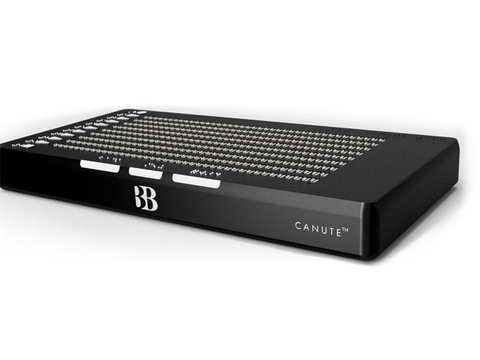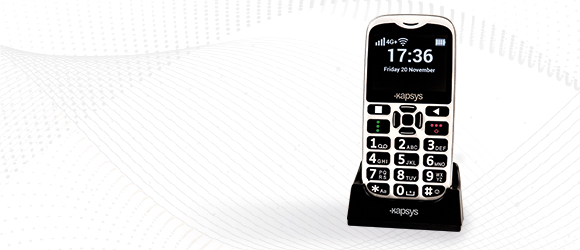Speech-to-Text Devices for Low Vision: Narrowing the Communication Gap
Speech-to-Text Devices for Low Vision: Narrowing the Communication Gap
Blog Article
Discover Cutting-edge Tools Made for the Aesthetically Impaired
The development of cutting-edge tools for the aesthetically damaged represents a significant improvement in accessibility and independence. Technologies such as clever glasses with AI capabilities and mobile applications designed to provide auditory descriptions are reshaping day-to-day experiences for customers.
Smart Glasses for Navigation
%20(1).webp)
Smart glasses designed for navigation are transforming the method visually impaired people connect with their environment. These advanced tools utilize a mix of electronic camera innovation, man-made intelligence, and auditory feedback to offer real-time information regarding surroundings. By utilizing obstacle discovery systems, wise glasses can inform customers to prospective threats, making it possible for much safer mobility in both unfamiliar and acquainted settings.
The combination of GPS innovation better improves navigating abilities, permitting individuals to obtain auditory directions as they move. This hands-free strategy not only cultivates independence but also equips visually impaired people to browse urban landscapes with boosted confidence. Furthermore, several wise glasses are outfitted with features that determine sites and street indications, supplying contextual details that enhances the individual experience.
In addition, the growth of these devices is continuously progressing, with companies working to improve the accuracy of item acknowledgment and broaden the array of navigational functions. As smart glasses end up being a lot more accessible and budget friendly, they hold the potential to considerably transform day-to-day life for visually damaged customers. Inevitably, these ingenious devices stand for an essential step toward inclusivity, offering improved mobility and a greater feeling of freedom for people browsing the world around them.

Mobile Apps for Daily Living
Exactly how can mobile applications enhance the every day lives of aesthetically impaired individuals? Mobile applications are reinventing the means aesthetically damaged customers navigate their environments, manage everyday tasks, and gain access to information. These applications give necessary assistance via numerous performances, cultivating independence and boosting high quality of life.
A number of ingenious mobile applications are made specifically for daily living. Applications like Be My Eyes attach aesthetically impaired individuals with sighted volunteers by means of video phone calls, enabling them to receive real-time assistance with tasks such as checking out tags or navigating unfamiliar spaces. Seeing AI, established by Microsoft, utilizes synthetic knowledge to describe environments, checked out text, and recognize things, successfully transforming a smart device right into an effective device for day-to-day help.
Furthermore, navigating applications tailored for the visually damaged, such as Aira and BlindSquare, supply audio-based instructions and ecological details, enabling individuals to traverse their surroundings safely and confidently. Beyond navigating and instant support, mobile apps likewise support company and task administration, with features that aid individuals establish reminders, create to-do checklists, and track appointments. In summary, mobile applications act as indispensable sources, equipping visually damaged people to lead more independent and meeting lives.
Wearable Technologies for Assistance
Empowerment with technology is progressively noticeable in the realm of wearable gadgets created to aid visually impaired people. These cutting-edge devices integrate perfectly into day-to-day live, boosting navigation and offering crucial comments to individuals. Smart glasses equipped with cams can acknowledge faces and read message out loud, permitting individuals to engage even more confidently in social and specialist settings.
Another notable improvement is making use of haptic comments systems in wearable tools. These systems utilize resonances or various other tactile signals to share info concerning the individual's atmosphere, such as challenges or changes in surface, boosting flexibility and safety. Wearable modern technologies also include wristbands that attach to smartphones, alerting customers to notices through subtle resonances, therefore boosting connection without dependence on visual signs.
As these modern technologies remain to evolve, they are not just boosting self-reliance for aesthetically impaired individuals but additionally cultivating a greater feeling of incorporation in culture. By connecting the gap between obstacles encountered in everyday see this here living and the possibility for autonomy, wearable modern technologies work as crucial devices in the pursuit for equality and empowerment for those with visual disabilities.
Sound Description Devices
Audio description tools play a critical role in improving ease of access for visually impaired individuals, providing them with the ability to involve with visual media. Speech-to-text devices for low vision. These devices use narrated descriptions of key visual elements in movies, television shows, and live efficiencies, guaranteeing that users can completely understand the context and emotions shared with visuals
Audio summary can be integrated right into different systems, consisting of streaming solutions, cinema screenings, and live cinema. Numerous prominent streaming services currently consist of audio description as an accessibility attribute, allowing audiences to select it quickly. In addition to traditional media, specialized applications likewise exist, providing audio descriptions for art events, galleries, and various other cultural occasions.
The performance of audio description depends upon the skill of the narrators, who have to share visual details succinctly without interfering with the original sound. Developments in this field are also leading the way for even more customized experiences, where users can readjust the level of information and pacing according to their preferences.
Braille Innovations and Tools
Braille tools and innovations go to my site have dramatically transformed the means visually impaired people connect with message and info. Modern innovations have actually caused the development of flexible devices that boost proficiency and independence among users. Especially, Braille present innovations have evolved, permitting for dynamic reading experiences. These gadgets convert electronic message right into Braille, making it possible for users to access a substantial array of info on computer Extra resources systems, tablet computers, and smart devices.
In addition, portable Braille notetakers integrate standard Braille input with modern-day functionalities, assisting in note-taking, scheduling, and record editing and enhancing on the move. Voice-activated assistive devices. These compact tools commonly include text-to-speech capacities, linking the space in between Braille and auditory info
On top of that, cutting-edge Braille printers have actually arised, permitting customers to generate Braille tags, files, and academic materials effectively. This access promotes better participation in instructional and professional environments, eventually advertising inclusivity.
Moreover, research study into smart Braille modern technologies continues to expand. Tools that incorporate expert system are being checked out to offer real-time navigating support and contextual information, improving the user experience in varied settings. On the whole, these innovations reflect a dedication to encouraging aesthetically damaged people via modern technology, ensuring they can easily access and involve with the globe around them.

Final Thought
The improvement of ingenious devices for the visually damaged considerably boosts freedom and top quality of life. These technologies not just foster greater addition yet also advertise autonomy in day-to-day activities, eventually adding to a more fair and easily accessible society for aesthetically damaged people.
As clever glasses become much more easily accessible and economical, they hold the prospective to dramatically transform day-to-day life for aesthetically impaired customers. Mobile applications are reinventing the means aesthetically impaired users browse their environments, take care of day-to-day tasks, and accessibility details. Applications like Be My Eyes link visually damaged customers with sighted volunteers through video clip telephone calls, enabling them to receive real-time aid with tasks such as checking out tags or browsing unknown spaces.Furthermore, navigation apps tailored for the aesthetically impaired, such as Aira and BlindSquare, offer audio-based directions and environmental details, enabling customers to traverse their surroundings securely and with confidence.The innovation of cutting-edge tools for the visually impaired substantially boosts freedom and high quality of life.
Report this page